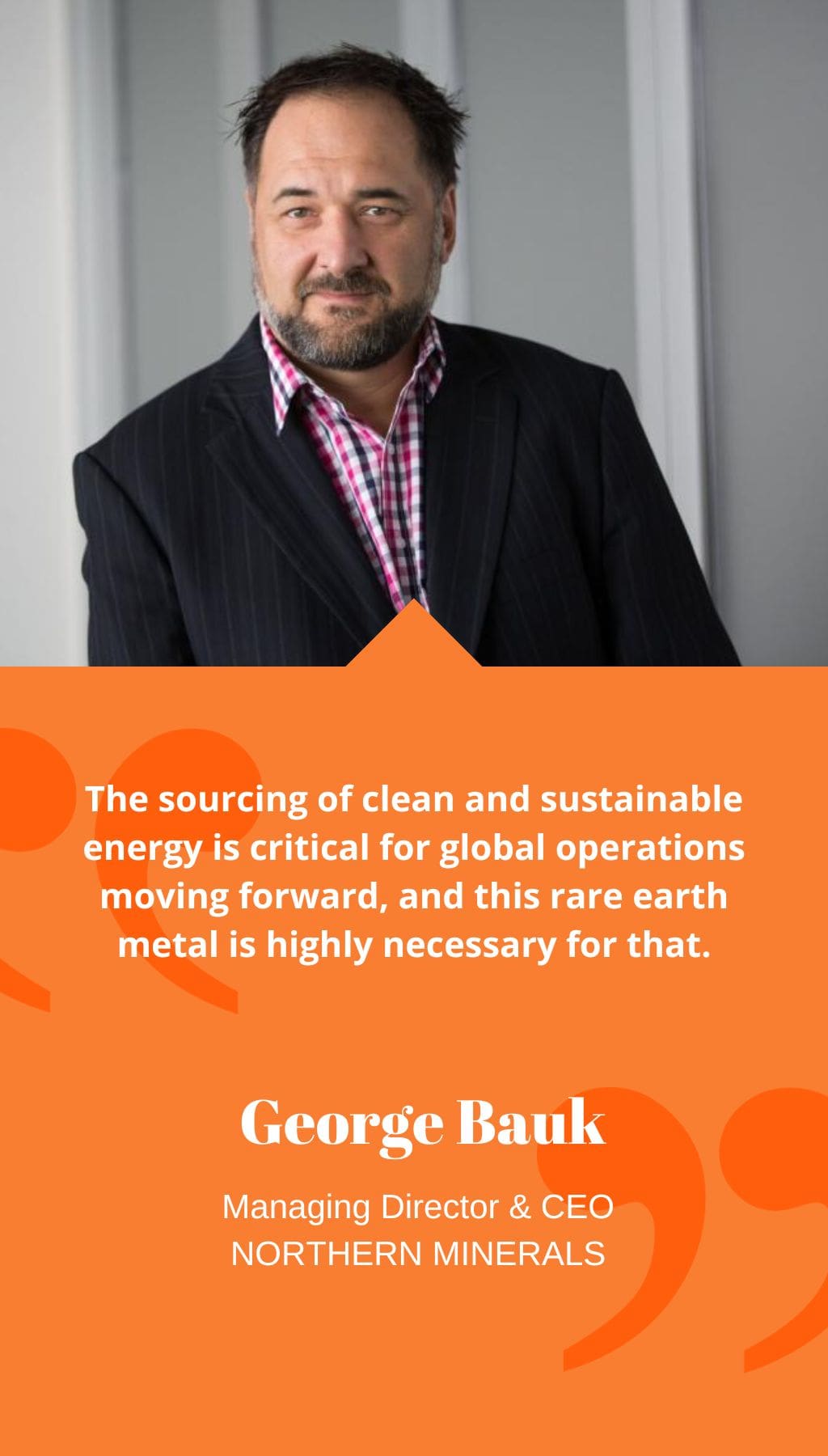
- Australia | 3 April 2017

Could you describe the current operations and landholdings of Northern Minerals in WA and Northern Territory, given that you were once a greenfields heavy rare earth explorer and now on the way to becoming the next global producer of high-value dysprosium outside of China?
Northern Minerals has undergone ten years of strategic planning to arrive at its current position. Our flagship project is Browns Range, which we aim to take into production in 2017. In 2011, we confirmed four xenomite mineralisation prospects with high-value dysprosium, which we then realized were a part of a greater geological structure called the Browns Range Dome. We announced our maiden JORC HRE resource in 2012 and have quadrupled it in size since. We have also signed a co-existence agreement with the Jaru people and conducted an EIA, as well as pre-feasibility and definitive feasibility studies (DFS). Additionally, Northern Minerals owns John Galt 100%, which is in the East Kimberley region of WA, and Boulder Ridge in the Northern Territory, which also hosts heavy rare earths.
What is the strategy of Northern Minerals to take the Browns Range project into production?
Our strategy to move into production involves a three-year testing phase through a site-based pilot plant, where we are currently finalizing an off-take agreement. The front end of the pilot plant can process 60,000 mt/y at 1.19% grade. It is a two-stage processing plant, with beneficiation and hydrometallurgical stages to produce 49,000 kg dysprosium in 590,000 kg TREO contained in a mixed RE carbonate per annum. The hydrometallurgical plant has a capacity of 3,200 mt/y. There is an average recovery of 80% for the full circuit, with the beneficiation plant at 90% and the hydrometallurgical plant at 90%. Philosophically, the pilot plant represents 10% of the full-scale operation in size. The first stage aims to de-risk the project, proving the ore body, the flow-sheet, and that the revenue account equals our sales agreement.
The second stage is to take the project to a bankable feasibility study (BFS) level, based on the DFS and outcomes from the pilot plant operation, to increase production and the ore reserves. The final stage is building the full-scale operation. At this point, the project would aim to process 585,000 mt/y to produce 279,000 kg/y of dysprosium.
How much funding is required to take Browns Range forward, and where are the financiers coming from?
Browns Range requires A$60 million, with most of it coming from China. This is an interesting aspect, given that the Chinese dominate the rare earth market. However, the Chinese culture thinks in terms of the long term, while Western companies are driven by revenue and shorter time horizons. In 2010, China stopped the export of rare earths minerals. After appealing to the WTO, China was forced to revert, but nobody established alternative heavy rare earth supply chains. All of the most active rare earth companies outside of China have some form of Chinese involvement.
What are the uses of dysprosium?
Dysprosium is an element used to produce NdDyFeB permanent magnets, which can remain magnetized even at extremely high temperatures or when placed in an area with other magnetic sources. Permanent magnets are indispensable for various applications, such as hybrid and electric vehicles, wind turbines, and electronics. The sourcing of clean and sustainable energy is critical for global operations moving forward, and this rare earth metal is highly necessary for that.














